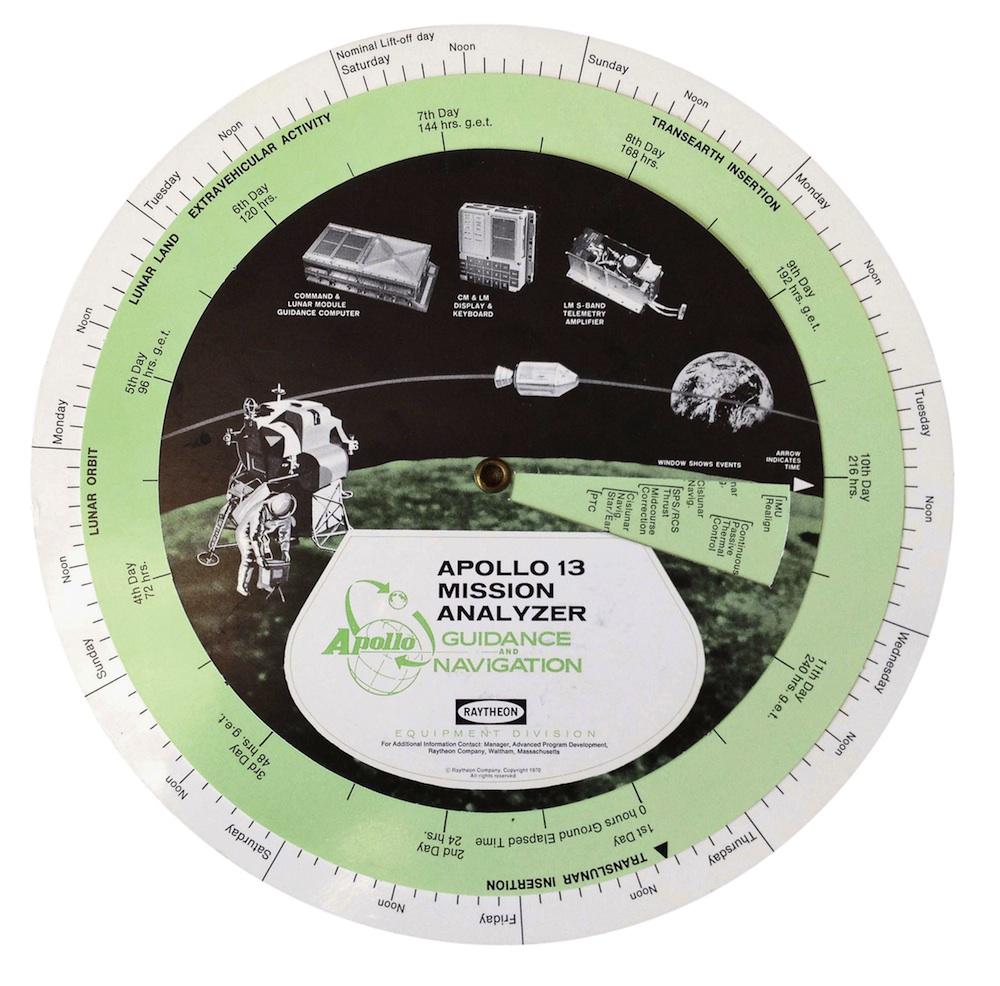The Vault is Slate’s history blog. Like us on Facebook, follow us on Twitter @slatevault, and find us on Tumblr. Find out more about what this space is all about here.
The new book Marketing the Moon: The Selling of the Apollo Lunar Program, by David Meerman Scott and Richard Jurek, tracks the massive public relations campaign around NASA’s first spaceflights. Below are some crafty bits of press-kit schwag from Raytheon and IBM, two of the major contractors involved in the program.
Scott and Jurek remind us that the Apollo program, which ran from 1963 to 1972, employed 20,000 private-sector corporations, whose public relations departments significantly shaped coverage. NASA’s own public affairs team was relatively skimpy, comprising just 146 people when Apollo 11 landed on the moon in July, 1969. The contractors had many more PR people on hand, with an interest in placing mentions of their products in the copious press coverage of the Apollo missions.
These tracking wheels represent two companies’ efforts to provide technical context, while distinguishing themselves from the piles of press releases on journalists’ desks. The Raytheon Apollo 13 analyzer was meant to help reporters translate NASA’s “Ground Elapsed Time” into familiar terms, and see which events were on the flight plan for that day. The wheel featured images of Raytheon-manufactured parts, but just as decoration.
IBM’s Apollo 11 wheel is much simpler, and more directly promotional, matching IBM systems components to times they were used during the mission.
Click on the images below to reach zoomable versions.

Courtesy MIT Press.

Courtesy MIT Press.